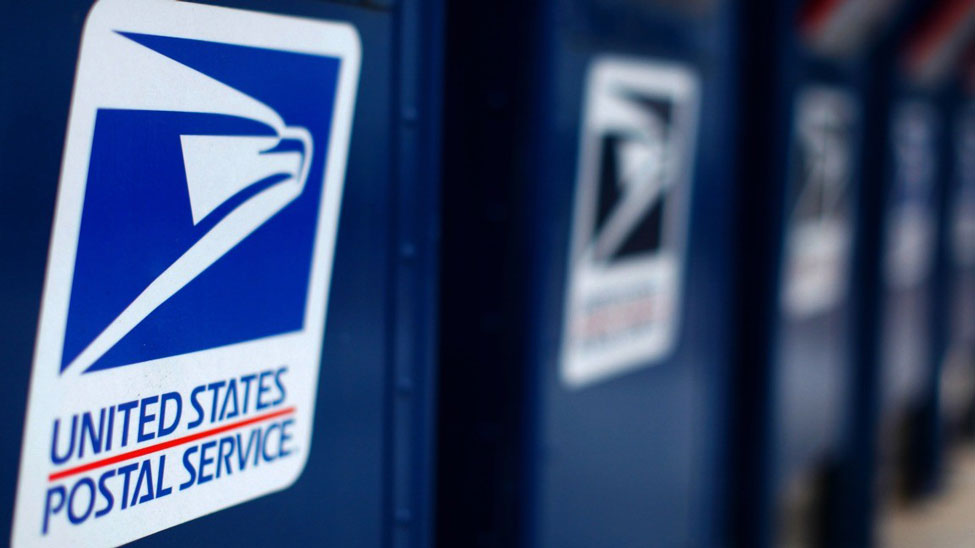
PRC: USPS needs to “take corrective action to restore service performance”

Postal Regulatory Commission (PRC) directs USPS to address compliance issues with pricing and service: flat-shaped mail and service performance continue to be major areas of concern.
The PRC (Commission) yesterday issued its FY 2021 Annual Compliance Determination (ACD) assessing the Postal Service’s compliance with rates and service standards.
The Commission is required to issue its ACD 90 days after the filing of the Postal Service’s Annual Compliance Report (39 U.S.C. Section 3653). This ACD is the first compliance review by the Commission following its implementation of new pricing rules for Market Dominant products in FY 2021. Those rules included new rate authority mechanisms, new requirements for workshare discounts and non-compensatory products, and several procedural changes.
The Commission’s primary areas of review, its findings, as well as recommendations and directives, include:
MARKET DOMINANT RATES AND FEES
Workshare Discounts:
Guided by the Efficient Component Pricing principle, the Commission’s review of workshare discounts focused on increasing pricing efficiency. The Commission found six workshare discount classes with passthroughs equal to 100 percent in FY 2021. Another six workshare discounts had passthroughs exceeding the 100 percent threshold and 63 workshare discounts with passthroughs that fell below 85 percent. The Commission finds that the workshare discounts equal to 100 percent cannot be changed in any rate adjustment proceeding prior to the issuance of the 2022 ACD. The Commission further directs the Postal Service to bring the latter 69 workshare discounts into compliance in the next rate adjustment proceeding.
Non-compensatory Products:
The Commission’s evaluation of Market Dominant non-compensatory products provides additional rate authority to non-compensatory classes and more strictly governs how rate authority must be used for non-compensatory products in compensatory classes. The Commission finds that there are two non-compensatory classes – Periodicals and Package Services, and four non-compensatory products within those classes – Periodicals In-County, Periodicals Outside County, Bound Printed Matter (BPM) Parcels, and Media Mail/Library Mail out of compliance. For Periodicals In-County and Periodicals Outside County, the Commission reiterates that the costs of these products continue to rise despite cost reduction initiatives and the maximization of its pricing authority, while unit revenue has remained relatively flat, negatively affecting cost coverage. For BPM Parcels, the Commission finds that the Postal Service has not taken adequate steps to improve cost coverage and directs the Postal Service to increase BPM Parcels’ prices by at least 2 percentage points above the class average in each rate adjustment affecting the Package Services class until the FY 2022 ACD. Continued price increases have resulted in improved cost coverage for Media Mail/Library Mail prompting the Commission to strongly recommend that the Postal Service continue its above-average price increases in future rate adjustment proceedings.
The Commission finds five non-compensatory products in compensatory classes – First-Class Mail Flats, USPS Marketing Mail Flats, USPS Marketing Mail Carrier Route, USPS Marketing Mail Parcels, and Money Orders (from the Special Services class) out of compliance. First-Class Mail Flats failed to cover its attributable costs for the first time. As it relates to USPS Marketing Mail Flats, the Commission discusses the product’s continued struggle to cover its attributable costs despite various prior ACD directives.
The Commission finds that all of these products failed to cover their attributable costs, and directs the Postal Service to increase the prices for these products by at least 2 percentage points above the class average in each Market Dominant rate adjustment proceeding affecting these products through the issuance of the FY 2022 ACD, consistent with 39 C.F.R. part 3030, subpart G. As it relates to issues that continue to plague flat-shaped products in general (i.e. First-Class Mail Flats, USPS Marketing Mail Flats, and USPS Marketing Mail Carrier Route) the Commission directs the Postal Service to continue to explore and implement opportunities to reduce unit costs, as discussed in Chapter VI.
COMPETITIVE PRODUCTS RATES AND FEESThe Commission’s review of Competitive Products shows that revenues for three products – International Money Transfer Service—Inbound (IMTS—Inbound), International Money Transfer Service—Outbound (IMTS—Outbound), and International Ancillary Services did not cover attributable costs and, therefore, did not comply with 39 U.S.C. § 3633(a)(2). The Commission directs the Postal Service to take remedial action as it relates to these products. The Commission further directs the Postal Service to file quarterly reports on a Pilot Program, which allows customers to use payroll and business checks to purchase gift cards, including updates on volume and revenue, as well as future plans for the Pilot Program. All other competitive products were in compliance.
SERVICE PERFORMANCE
The Commission finds that most Market Dominant products failed to meet their service performance targets for FY 2021 and directs the Postal Service to take corrective action to restore service performance for its Market Dominant products in FY 2022. Notably, FY 2021 was the seventh consecutive year that no First-Class Mail product category achieved its service performance target. Of the 27 Market Dominant products/categories measured, 21 products/categories (more than 77 percent) did not meet their targets in FY 2021, and some were substantially below the applicable target.
The Commission’s evaluation of the Postal Service’s service performance takes into consideration the effects of the COVID-19 pandemic, which exacerbated pre-existing service performance challenges. It further recognizes three primary challenges resulting from the COVID-19 pandemic- reduced employee availability, transportation disruptions, and changes in the mail mix that affected the Postal Service’s service performance in FY 2021. As a result, the Commission has developed specific directives that are designed to elicit information and data from the Postal Service regarding the effectiveness of the Postal Service’s service performance initiatives and the steps that the Postal Service will take to restore service performance for its Market Dominant products in FY 2022.
FLAT-SHAPED MAILThe Commission’s review of issues related to flat-shaped mail products (flats) finds that the processing and delivery of this mail category continue to be a problem for the Postal Service despite operational initiatives and cost-reduction efforts. The associated challenges have led to continuous and persistent increases in costs, with five out of eight flats products not covering costs in FY 2021. In addition, no flat-shaped mail product met its service performance target in FY 2021.
The Commission focused its analysis on five areas: (1) flats financial performance, (2) flats service performance, (3) the impact of operational initiatives and methodological changes on flats, (4) pinch points that impact flats operational performance, and (5) flats unit costs for mail processing, delivery, and purchased transportation operations. The Commission makes several recommendations for data collection and analysis regarding ongoing and future Postal Service initiatives designed to reduce flats costs, improve flats service performance, and/or improve flats operations. The fact that in FY 2021 flat-shaped mail products collectively had a cumulative negative contribution of almost $1.3 billion highlights the urgency and importance of improvement on this issue.
· The Commission recommends that the Postal Service continue to estimate and report the additional cost that bundle breakage adds to flats processing.
· The Commission directs the Postal Service to implement initiatives to reduce mail processing costs. The Commission further directs the Postal Service to target those mail processing facilities that have extreme (unusually high or low) productivity values or missing workhours or volume at the operation and daily-tour-level to improve the reporting of these facilities or explain why the provided productivity is accurate for a given facility, mail processing category, fiscal year, and quarter.
· The Commission recommends that in FY 2022, the Postal Service develop an accurate method to track flat-shaped mail that is manually processed. Once there is an accurate measurement of such flat-shaped mail, the Postal Service shall develop a specific plan to continue to decrease the quantity of flat-shaped mailpieces processed manually, and achieve a proportional reduction in unit mail processing costs for manual operations.
· The Postal Service must develop a plan to reduce the costs associated with allied operations and gain additional insight into allied operations. Further, the Postal Service must use the updated version of the Cycle Time report to generate detailed data/reports on mail entry points. The Postal Service must also indicate the work in process cycle time for each processing point, and the corrective action(s) taken when delays occur in processing points.
· The Postal Service must develop a plan to reduce the costs associated with transporting flat-shaped mail in FY 2022. The plan shall establish specific achievable goals to reduce transportation costs for flat-shaped mail.
· The Postal Service must develop a plan in FY 2022 to reduce the costs associated with delivering flat-shaped mail. The plan should establish specific achievable goals that reduce delivery costs for flat-shaped mail.
The Commission’s full review of the Postal Service’s compliance with rates and service in FY 2021 is available at www.prc.gov, along with related documents filed in this docket.









